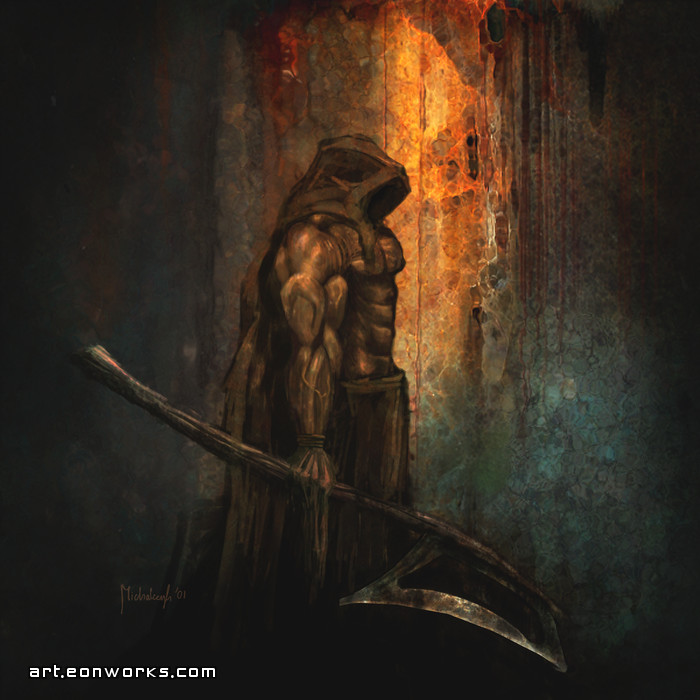COMBAT DOMINANCE: At 4th level, the fighter gains an extra attack with
any weapon when fighting opponents with 1 hit die at. In order to use this
ability, the fighter must direct all attacks in a combat round against opponents
that meet these criteria. The fighter can split the available attacks among
qualified opponents as desired. This ability improves as the fighter progresses in
levels. The fighter gains an additional attack for every four levels gained after
4th level. So, at 8th level, the fighter is allowed a total of three attacks.
One option for this I have seen is exchanging Combat dominance for Cleave.any weapon when fighting opponents with 1 hit die at. In order to use this
ability, the fighter must direct all attacks in a combat round against opponents
that meet these criteria. The fighter can split the available attacks among
qualified opponents as desired. This ability improves as the fighter progresses in
levels. The fighter gains an additional attack for every four levels gained after
4th level. So, at 8th level, the fighter is allowed a total of three attacks.
Cleave: At 4th level, the fighter gains the ability to follow through after dropping an opponent.
When fighting with a melee weapon, if a fighter deals enough damage to drop an opponent to 0 or
less hit points, he gets an immediate extra attack against an opponent in reach. The fighter cannot
move to make this additional attack. The extra attack is with the same weapon and at the same
bonus as the attack that dropped the previous creature. This ability can only be used once per
round. It stacks with the Extra Attack ability, so a 10th level fighter will get three attacks if he
drops an opponent with a melee weapon that round.
While I think cleave is a good ability I would like to go over a few more options.
First an alternate cleave ability.
Cleave: At 4th level, the fighter gains the ability to swing his weapon in a way to take advantage of the weapons arch. When making an attack against a target that has an adjacent foe you may make a single attack against both targets. A single roll is made and compared to both defenses (AC). If the roll would be a hit against both targets both take damage.
Another option.
Fighting stances: Fighters get 3 stances. After rolling initiative fighters get to choose a stance to assume for the battle. The first stance is balanced stance. Balance stance is middle of the road it imparts no penalties and no bonuses and is balanced. The second stance is battle stance. Battle stance is aggressive. Battle stance trades defense for viscous attacks. Being in battle stance imparts a -2 to defense (AC) but grants a +1 to attack and +1 to damage rolls. The last stance is defensive stance. Defensive stance imparts a -1 to to attack and - 1 to damage rolls, But grants a +2 to defense (AC).
Balance 0
Battle Stance: -2 to defense (AC), +1 to attack and +1 to damage rolls.
Defensive Stance: -1 to to attack and - 1 to damage rolls, +2 to defense (AC).


